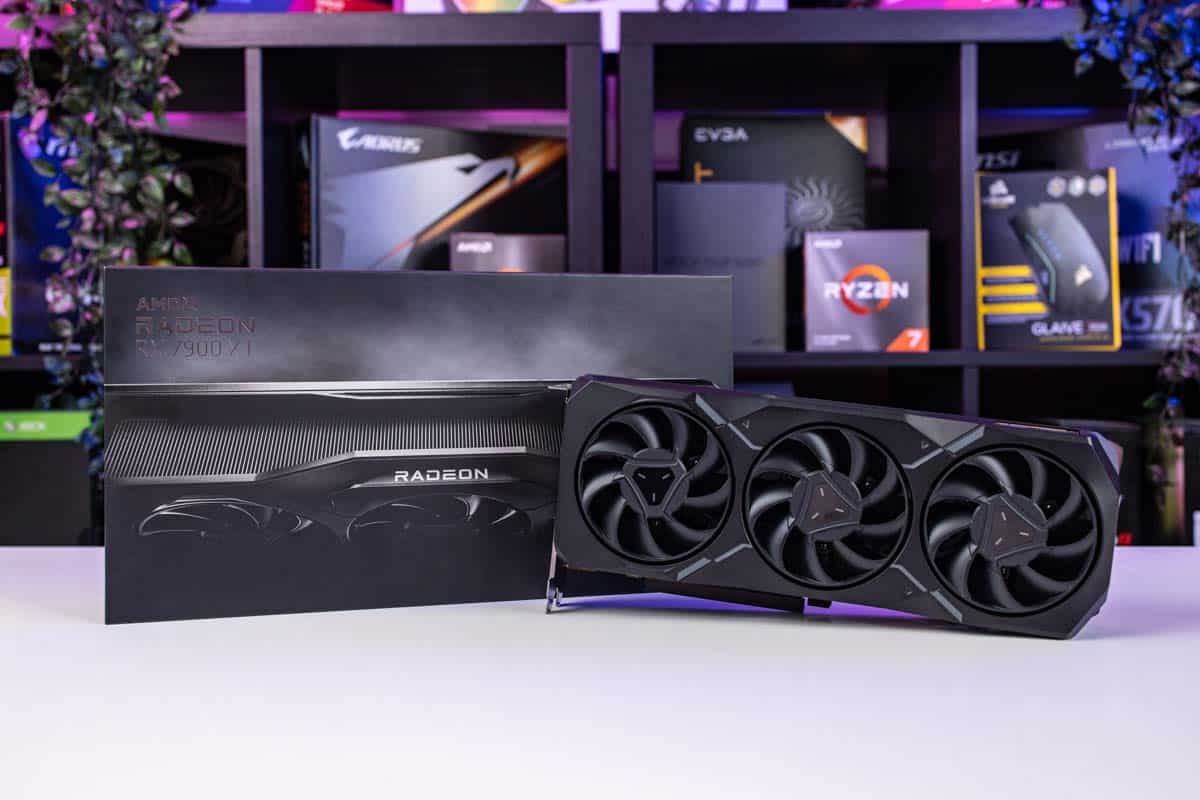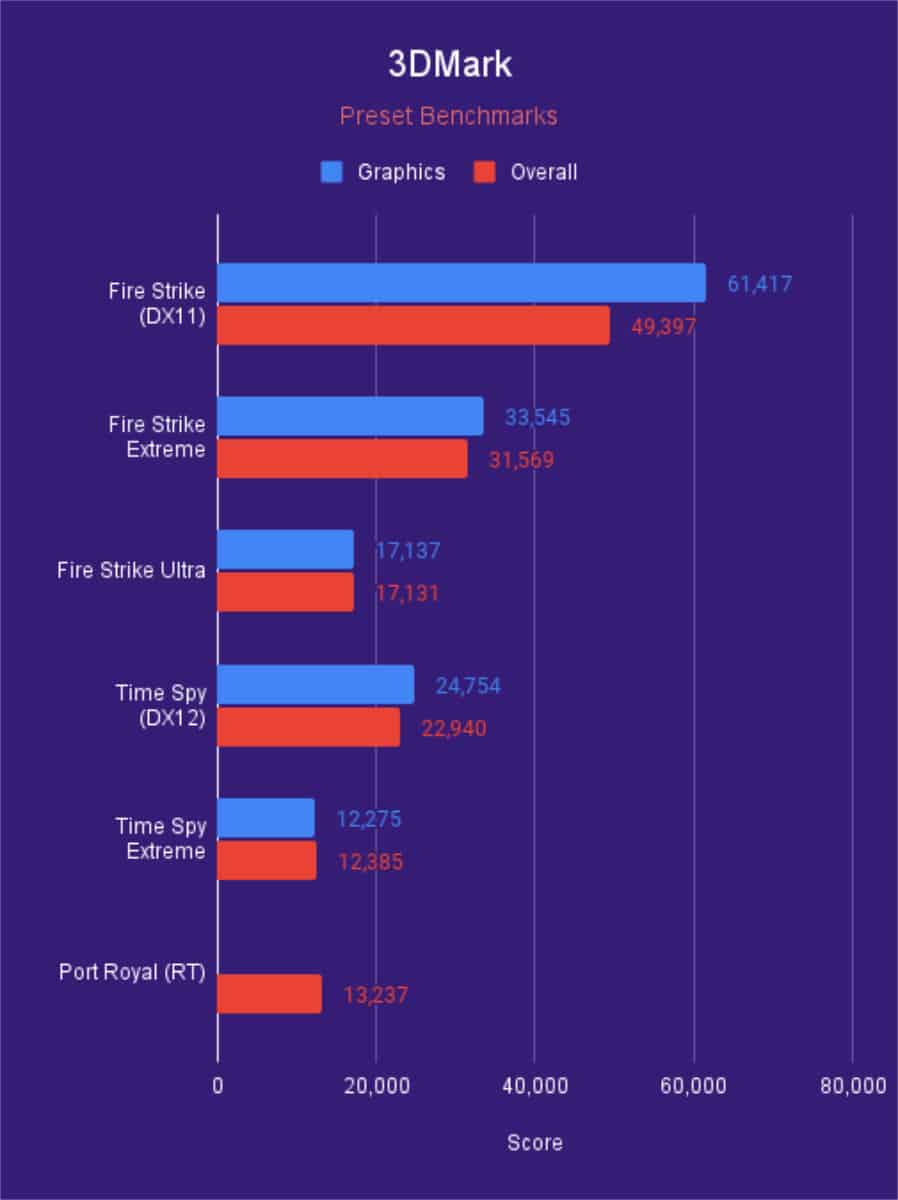Last update:
Nvidia has been launching its RTX 4000 series for a couple of months now and AMD finally has its answer. So we tried a new RDNA 3 card to give you Radeon RX 7900 review.
The all-new reference design has decided it’s not like the new RTX 4090 or RTX 4080 in terms of size or price. So it boils down to what it can offer in opposition.
We can’t wait to see the cards work well. As AMD has promised a lot of improvements and it should be a great alternative to break Nvidia’s grip on the market.


AMD Radeon RX 7900XT
Main clock speed
1.5GHz base, 2GHz game, 2.4GHz boost
Dimensions
276x135x51mm
Packaging and design
AMD’s packaging keeps it at the basics in its packaging, which is nice enough. Without all the extra faff and screen protector that will still be trashed. As is not a necessity these days.
The graphics card fits perfectly into the film and is quite difficult to extract. But that prevents it from rattling in there without needing extras. It also sits at a slight angle to make getting out a little easier.
editorpick
Editors Choice

Save $800
Samsung S95B 65″ QD-OLED TV
Samsung introduces the latest QD-OLED TV technology in the S95B, delivering outstanding color accuracy, brightness and contrast. In addition to these features, the S95B also features
*Prices are subject to change. WePC is supported by the player. When you buy through links on our site, we may earn an affiliate commission. Find out more
Previous one
Next
There are also no IO port covers in the back which can be annoying if you forget to remove it and try to install it. While there is a PCIe slot cover, important data pins will be protected.
By removing the card from the box you are left quite empty. All that’s left is a small compartment for any small documentation. So this makes the whole unboxing much easier and hassle free without so much waste.
Now regarding the design of the cards, these are even better than the previous design. By removing any silver highlights, the entire design is now invisible. With just a whole black coloration on the card.
You just get a dash on the red highlight next to the power connectors on the side. And the IO metal cover, which easily collects any fingerprints after handling.
Another feature of the card is that it uses only two 8-pin PCIe power connectors. Without new 12 pin power connectors from new ATX 3.0 spec which caused some problem if not installed properly.
This also means that the card lacks a large TBP and cooler. That means it also measures just 276mm long, 135mm wide, and 51mm thick (2.5 slots). But it feels dense, weighing in at 1,519kg in that small package.
So it shouldn’t have any problems with its cooling. With its densely packed heat sink and three enclosed fans to keep it cool. As well as a metal backplate to emit heat without restricting it.
The card design is quite edgy with sharp edges. And angles to add to the all-black gothic design. But even so, it makes it stand out and has great quality construction.
Previous one
Next
Specific
1.5GHz base, 2GHz game, 2.4GHz boost
1x HDMI 2.1, 2x DP 2.1, 1x USB-C
Professionals
-
Much cheaper than its Nvidia counterparts for similar performance -
Sleek and stealthy all black design that is very stylish and fits well -
Low TBP and low power consumption with a great cooling design that keeps the board size down
Versus
-
Still missing some ray tracing performance although it has improved
The RX 7900 XT is one of the first two cards in the RDNA 3 architecture lineup. Further aiming to improve performance and optionality as a good GPU choice.
This new generation, divides its graphic matrix. By moving to a multi-chip module (MCM) design, the graphics die is split into multiple chiplets. Giving much improved yield from silicon with smaller size.
Now the manufacturing process has been further improved and uses TSMC’s 5nm and 6nm processes. This is divided between GCD and GCD respectively. Which then measures 300mm2 and 220mm2.
For the 7900 XT, ti packs 84 compute units, 84 beam accelerators, 168 AI accelerators (a new addition to the graphics family), as well as 5,376 stream processors and 192 ROPs. These have the potential to hit a game clock of 2 GHz and a boost up to 2.4GHz.
Now the Infinity Cache has dropped to 80MB, but the card now contains 20GB of GDDR6 memory. Clocked at 20Gbps and on a 320-bit memory bus, it has a bandwidth of 800GB/s. AMD saves both power and money by not using GDDR6X memory which may not have the biggest performance boosts.
Even though AM5 is ready for PCIe 5 expansions, the new cards are still only on PCIe 4.0. It’s still likely that cost savings and cards aren’t using the full bandwidth potential. Now the power of the board is 315W. A slight bump from the announcement of improved performance at not too much extra cost.
Though it still falls below the 4080’s 320W and much less than the 4090’s 450W. The reason why it fits is its size and limited power connectors. Though custom cards are likely to expand on count.
For its display outputs, this generation is the first to feature the new DisplayPort 2.1 specification. With displays expected to feature it in early 2023, it offers plenty of future-proofing. And the reference card has two, along with an HDMI 2.1 connector and a USB Type-C connector. So it’s very flexible on what you can use as a display.
Price
In terms of price, this is another area that AMD aims to be very competitive. With the 7900 XT’s MSRP pegged at $899. So while it’s more expensive, it’s not as much as the competition.
So as long as performance and features are there, it’s a great place to be for the GPU. Mainly because the 4080 has not been such a hot product, with lots of stock available unlike the 4090 which has been in high demand.
Thermals and cooling of the RX 7900 XT
Thermally, the graphics card is well designed. With a great performance under load. In our tests, its results really show off. As with full load, the card never went above 61℃. A different philosophy than the Ryzen 7000 CPUs.
While the fans max out at 1,771 RPM but not at an unreasonable loudness. This also means that the temperature curve is very good, with the temperature returning to 40℃ within five minutes.

These cards are also equipped with a temperature probe in the fans. Which will measure the ambient temperature entering the card to cool it. And so it will give you more control over the fan curves with some extra data to base it on.
Benchmark RX 7900 XT
For the most important part, let’s see how the card behaves in games. While we didn’t have the cards available or the time to test it on multiple GPUs, it should give you a good understanding of what it can achieve.
Our test bench
- CPU: AMD Ryzen 9 7950X
- Cooler: Asus ROG RYUJIN II 360
- RAM: 2x 16GB Trident Z5 Neo DDR5
- Motherboard: ASUS ROG Crosshair X670E Hero
- Power supply: ASUS ROG Thor 1000W
- Case: Cooler Master MF 700
Previous one
Next
So in Assassins Creed Valhalla, we get solid performance across the board at ultra settings. With 1080p performance of 175 FPS, 1440p at 145 and 4k at 90 FPS on average. The 0.1% is likely due to our test method versus the actual performance of the paper.
CS:GO is an eSports game that is very easy to play. And so it’s no surprise that this high-end card pops out of frames. And so 1080p gets 724 FPS, 1440p averages 555 FPS, and 4k gets 313 FPS.
Cyberpunk 2077 offers the first look at ray tracing performance of the generation. With a promised improvement in it. But it’s still a big hurdle, with the ultra and psycho levels really filling it. So 1080p performance drops from a very good 171FPS all the way down to 51 with ray tracing. While 1440p goes from 119 to 32 FPS. While the 62 playable at 4k drops to just 15. Probably waiting for the FSR benefits the game offers.
Doom Eternal has much less ray-traced effect, although the high framerate may hide the effects as such. As the 426 frames at 1080p nearly halve to 264 with RT. While the 349 at 1440p drops to 208 and the 195 FPS drops to 115 FPS at 4K. All of which is still a great gaming experience.
Far Cry 6 is much less intensive in its ray tracing and therefore overall we see over 100 FPS across the board. Except, of course, the 87FPS it drops to with 4k ray tracing, which is still a good result with ultra settings that can be dialed in.
Fortnite is definitely not meant to be played epicly and on the highest settings. But these are still reasonable framerates, even if it dips below 50 at 4k. Then it can be set to more reasonable options.
Overwatch 2 is relatively new, but still an esports title it’s all about performance. And so high numbers give you a great ability to play your best game at nearly 400 FPS at 1080p, close to 300 at 1440p and 160 at 4k.
Rainbow Six Siege is in similar park, with well over 144Hz across the board. With the potential for much higher numbers if needed.
Shadow of the Tomb Raider also sees higher framerates. Although the graphs can be crooked compared to scene loads between benchmarks, so it can be deceiving and runs much smoother.
Synthetics
There is also a pure performing synthetic tested in 3DMark. This is a quick and easy way to compare how graphics work and look at them in terms of other cards. It definitely shows the increase in the card.

Final thoughts
Overall, the card is a very good contender when it comes to pure gaming performance. AMD has seen a big improvement in the software and drivers department and therefore it is no longer a disadvantage to use their cards.
Framerates are improved along with ray tracing performance. So that was a good increase in what they can offer. Especially at the price, they set. As long as the stock can follow it will be a good alternative as it is cheaper than what Nvidia has to offer.
So costing less and running at a lower cost has become more important these days. That’s as long as the rest of people can see it, but we like what Radeon has to offer these days and look forward to the competition even with lower-end cards.